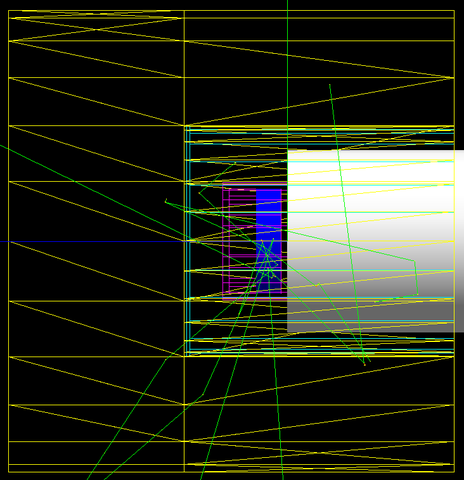
A visualization of the detectors used for anticoincidence counting, the popular method for precisely measuring radioactive nuclides that was the subject of this work. The image depicts the radioactive source (blue cylinder), alpha/beta detector (red), gamma-ray detector (yellow), and the gamma rays created by the decay of the radioactive source (green).
A little detective work by nuclear physicists has uncovered hidden uncertainties in a popular method for precisely measuring radioactive nuclides, often used to make reference materials for forensic analyses such as radioactive dating.
The much-used method, called α/β-γ anticoincidence counting, has long relied on simplified assumptions. Now researchers from NIST's Radiation Physics division have produced a more realistic model and used it not only to improve estimates of previously identified uncertainties but to find new ones too.
The researchers hope that with development, their work will reduce the uncertainties of radioactivity measurements by an order of magnitude. Such a reduction could shrink the window of time for inferring the age of a material in a forensic study from months to weeks.
It could also enhance forensic standards by improving measurements of the actinides, a radioactive group of elements that includes uranium and plutonium. At the moment, radioactivity measurements typically have uncertainties of between a few tenths of a percent to a percent.
Over the next several months, the NIST team will collect additional data with an improved system* and use it to refine their model.
The work could also have implications for fields beyond nuclear forensics. In clinical medicine, for example, a fully developed model could improve measurements of some of the newer radionuclides that are being evaluated for clinical use and that have been difficult to standardize using conventional methods.
-- Reported and written by Jennifer Lauren Lee
*The team will use its new NIST digital coincidence system, which is more capable than the analog system they had used previously.

